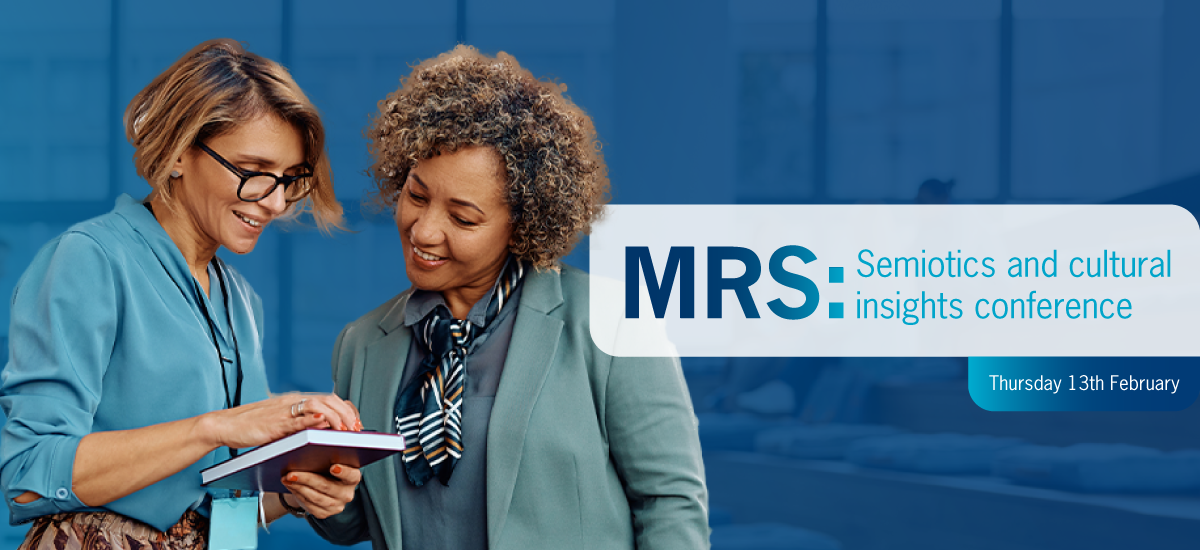
Last Thursday, I found myself next to the British Museum, home to the Rosetta Stone—its single most visited object. The Rosetta Stone contains a piece of ancient text written in three different languages. This incredible discovery allowed scholars, for the first time, to translate a multitude of other texts that had previously been impossible to understand.
How fitting, then, that the conference that brought me to this corner of London was focused on semiotics and cultural insight. Semiotics is all about decoding signs and understanding their cultural meanings—or, in a business context, taking cultural meaning and translating it into brand iconography. The challenge for marketers is that signs and cultural meanings are always shifting, which is why we no longer communicate in hieroglyphics.
So how can brands keep up? And how can I, as an insight specialist, help translate culture for my clients?
These were the key questions explored across a day of talks at this MRS conference. As expected for a semiotics event, the slides were stunning, the speakers articulate and the brands iconic.
First up, Swarovski and Verve explored how ‘luxurious joy’ is being understood and expressed by a new generation of consumers. Unilever and Quantum also examined the evolving codes of ‘premium’—moving from expensive and serious to thoughtful and experiential.
Both PepsiCo and Coca-Cola presented—separately, of course—on aligning packaging cues with cultural trends and identifying ‘inflection points’ in people’s lives where communication resonates most. Generational contrasts and the importance of differentiating codes were recurring themes throughout the day.
Co-op, a very different brand, shared how they worked with Rachel Lawes Consulting to decode their core value of convenience. They examined what convenience means for a new generation of customers who are no longer popping into shops for newspapers and cigarettes.
After lunch, things took a fun turn with discussions on Britishness. The BBC and Craft tackled the challenge of exporting British content abroad—particularly to the US. When they asked Americans to describe ‘Britishness,’ they got predictable answers. But applying a semiotics framework helped them understand why some shows landed much better than others with American audiences.
Boots and Acacia Avenue discussed developing a communications campaign based on the idea of ‘British Summertime’—with all its ups and downs. By juxtaposing summer against Christmas, they provided a creative springboard for the agency, resulting in a highly successful campaign built on the comedic potential of expectation vs. reality.
Using the right language is fundamental to building authentic connections with customers. But language and cultural ideas evolve constantly, making it tough for brands to stay relevant with each new generation. Semiotics can’t predict the future, but it helps organise emerging codes and prepare brands for new challenges. Several speakers highlighted that semiotics and cultural insight can be a tough sell internally—especially where budgets are tight or data-heavy insight is the norm. However, the payoff in terms of connection and differentiation can be significant.
At Adelphi, I use cultural insight and semiotics to understand decision-making in healthcare within the broader context of cultural meaning, social norms, and values. This approach integrates seamlessly with both qualitative and quantitative methodologies and can be enhanced with AI technology. It’s especially useful for studying disease areas with strong social or cultural components or for communications research—where getting the language right is critical to success.
Cultural insight is a key part of our PRISM™ philosophy, which combines a multi-lens framework with a range of smart tools. Our holistic approach uncovers implicit, underlying, and non-rational drivers, generating insights tailored to your business challenge.
Interested in learning more about how Adelphi apply this creative thinking? Connect with Gill or reach out at [email protected] to discuss how we can help.
